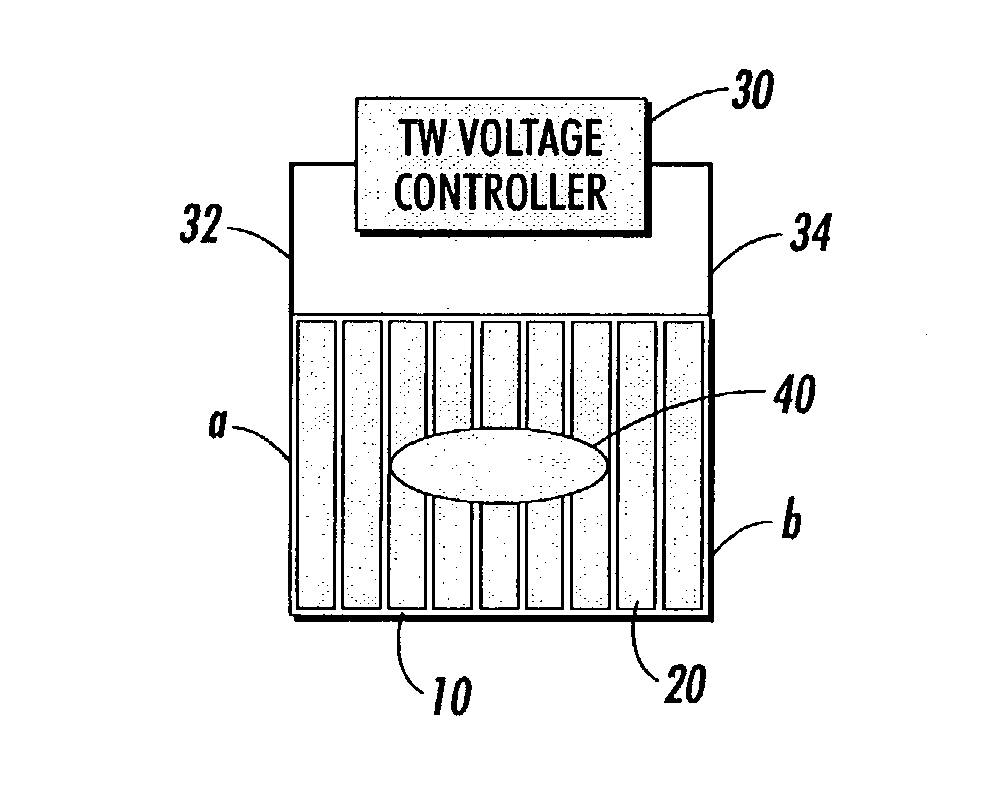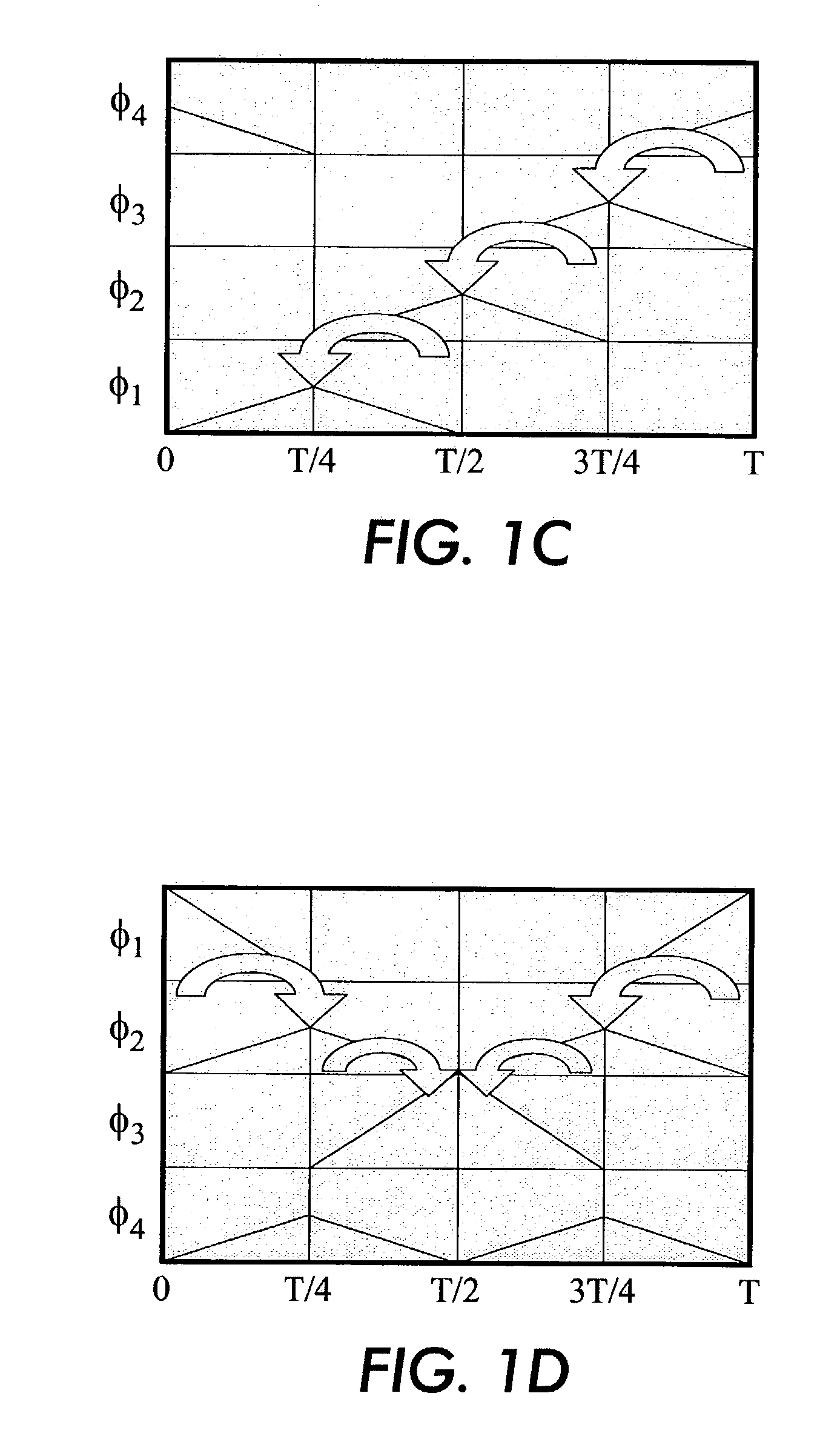Traveling wave algorithms to focus and concentrate proteins in gel electrophoresis
- Summary
- Abstract
- Description
- Claims
- Application Information
AI Technical Summary
Benefits of technology
Problems solved by technology
Method used
Image
Examples
Embodiment Construction
[0031]Separation and identification of biomolecules such as proteins and DNA is an important step in biotechnology. In this post-genomic period, 2D gel electrophoresis is emerging as the workhorse for protein separation. The methodology is 30 years old and has seen mostly minor technology improvements. The present invention provides an apparatus and related method to improve resolution by compacting the protein patch using bidirectional traveling waves after the initial gel electrophoresis separation.
[0032]The primary objective of using electrostatic traveling waves is the very rapid transport of proteins or molecular components undergoing analysis that may be achieved by creating very high local electrical fields with low voltages using an electrode grid with a very fine pitch. The present invention provides several advantages over conventional gel setups including lower voltage (1V compared to 200V for PAGE and 8000V for IEF), and much higher transport velocities (up to 10 times o...
PUM
| Property | Measurement | Unit |
|---|---|---|
| Phase | aaaaa | aaaaa |
Abstract
Description
Claims
Application Information
 Login to View More
Login to View More - R&D Engineer
- R&D Manager
- IP Professional
- Industry Leading Data Capabilities
- Powerful AI technology
- Patent DNA Extraction
Browse by: Latest US Patents, China's latest patents, Technical Efficacy Thesaurus, Application Domain, Technology Topic, Popular Technical Reports.
© 2024 PatSnap. All rights reserved.Legal|Privacy policy|Modern Slavery Act Transparency Statement|Sitemap|About US| Contact US: help@patsnap.com










